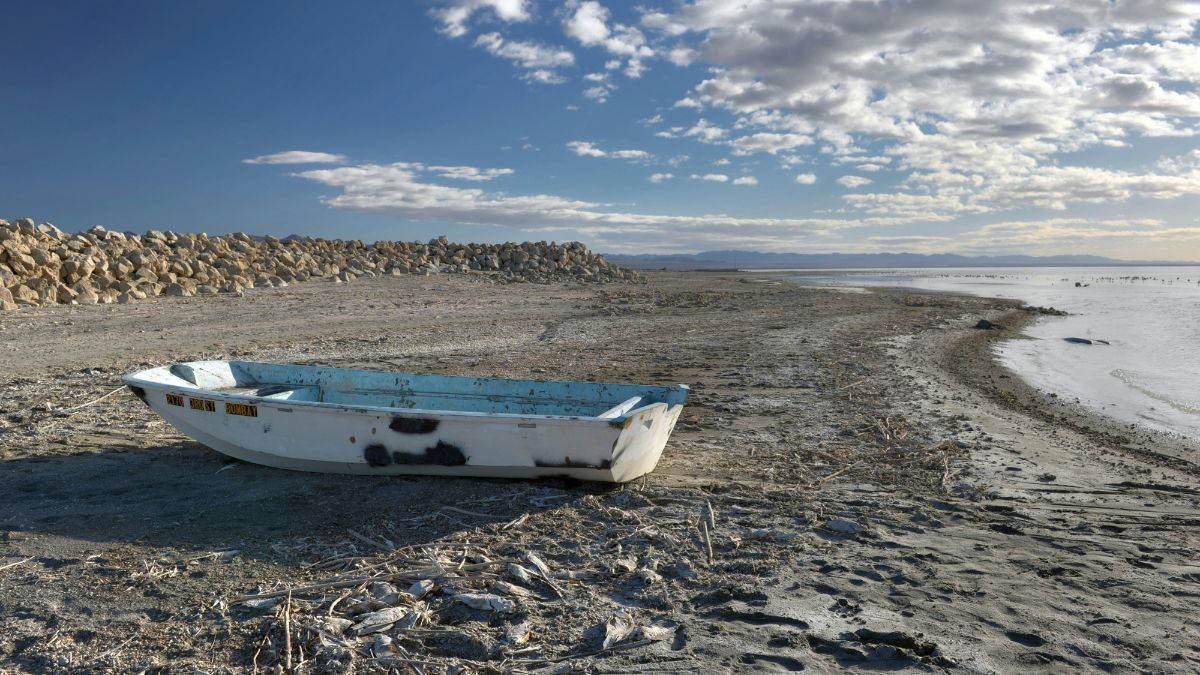Humanism
How Did Language Begin? The Great Mystery of Human Communication
25 December 2025

Scientists in California are raising the alarm: the toxic dust rising over the Salton Sea is affecting the lungs like a disease. Just a few days of exposure is enough for the lung microbiome to begin changing—and the effects may be irreversible.
The Salton Sea has been shrinking for decades. The exposed lakebed is becoming a source of dust that the wind spreads throughout the area. Local residents have long suspected that this dust links to the respiratory problems facing the local community. Now, researchers from UCR have confirmed these suspicions. They described their findings in the scientific journal mSphere.
Researchers collected dust samples from locations at varying distances from the lake and tested their effects on mice enclosed in special exposure chambers. Before the experiment began, the animals were completely healthy. After one week, the situation changed.
The Salton Sea dust radically altered the composition of microorganisms living in the rodents’ lungs. Previously, scientists had only observed similar effects as a result of serious respiratory illnesses; a purely environmental factor had never created the change. According to the scientists, the dust from the Salton Sea negatively affected the animals’ lungs even after filtration.
The Salton Sea was formed by accident in 1905. Engineers from the California Development Company attempted to divert water from the Colorado River into the Imperial Valley to irrigate agricultural lands. However, they built a canal without adequate flood protection.
When the river swelled after the spring thaw, the dam broke, and water poured continuously into the valley’s lowest point for two years. The terrain favored this, as it is one of the lowest-lying places in the U.S. (85 m below sea level). This irrigation disaster resulted in the creation of California’s largest lake.
From the 1920s to the 1980s, the Salton Sea was a popular tourist destination. Then, due to the diversion of water from the Colorado River for agricultural purposes, combined with rising temperatures and evaporation, it began to shrink. Now, its bed is a source of toxic dust that threatens the health and lives of everyone in the vicinity.
Although the dust itself was devoid of bacteria or other microorganisms, its chemical composition enhanced the growth of certain harmful microbes. The dust exposure caused bacteria from the Pseudomonas and Staphylococcus genera to multiply in the affected samples—both linked to respiratory tract inflammation.
Meanwhile, in some cases, up to 60 percent of immune cells in the mice’s lungs showed properties characteristic of acute inflammation. By contrast, in animals breathing filtered air, this level was only 10-15 percent.
“We have seen these kinds of microbiological changes in people with cystic fibrosis or infections,” says Emma Aronson, an environmental microbiologist at UCR. “But these mice had no prior conditions. It was a clean slate—yet this still happened.”
It is this element that makes the California scientists’ discovery groundbreaking. The toxic dust from the Salton Sea can cause changes in the lungs previously observed only with serious illnesses. For the first time, it has been proven that the environment itself—without infection or genetic disorders—can act like a silent lung disease, destroying the human microbiome and immunity.
David Lo, a professor of biomedical sciences at UCR, argues that this toxic dust from the Salton Sea is the main reason for the high incidence of asthma in the area. Meanwhile, the lake continues to dry up, and more and more sediment from its bottom is being carried into the air.
The research team is now investigating whether similar microbiological changes occur in children from surrounding towns. Scientists also want to know how long the changes persist in the lungs and whether they are reversible.
The study also opens a broader perspective. If dust can change microbes in the lungs, what about smoke, car exhaust, or aerosols from e-cigarettes? Researchers plan to check whether other types of exposure cause similar disturbances.
Read this article in Polish: Z wyschniętego jeziora unosi się trucizna. Toksyczny pył atakuje płuca

Truth & Goodness
24 December 2025


Zmień tryb na ciemny